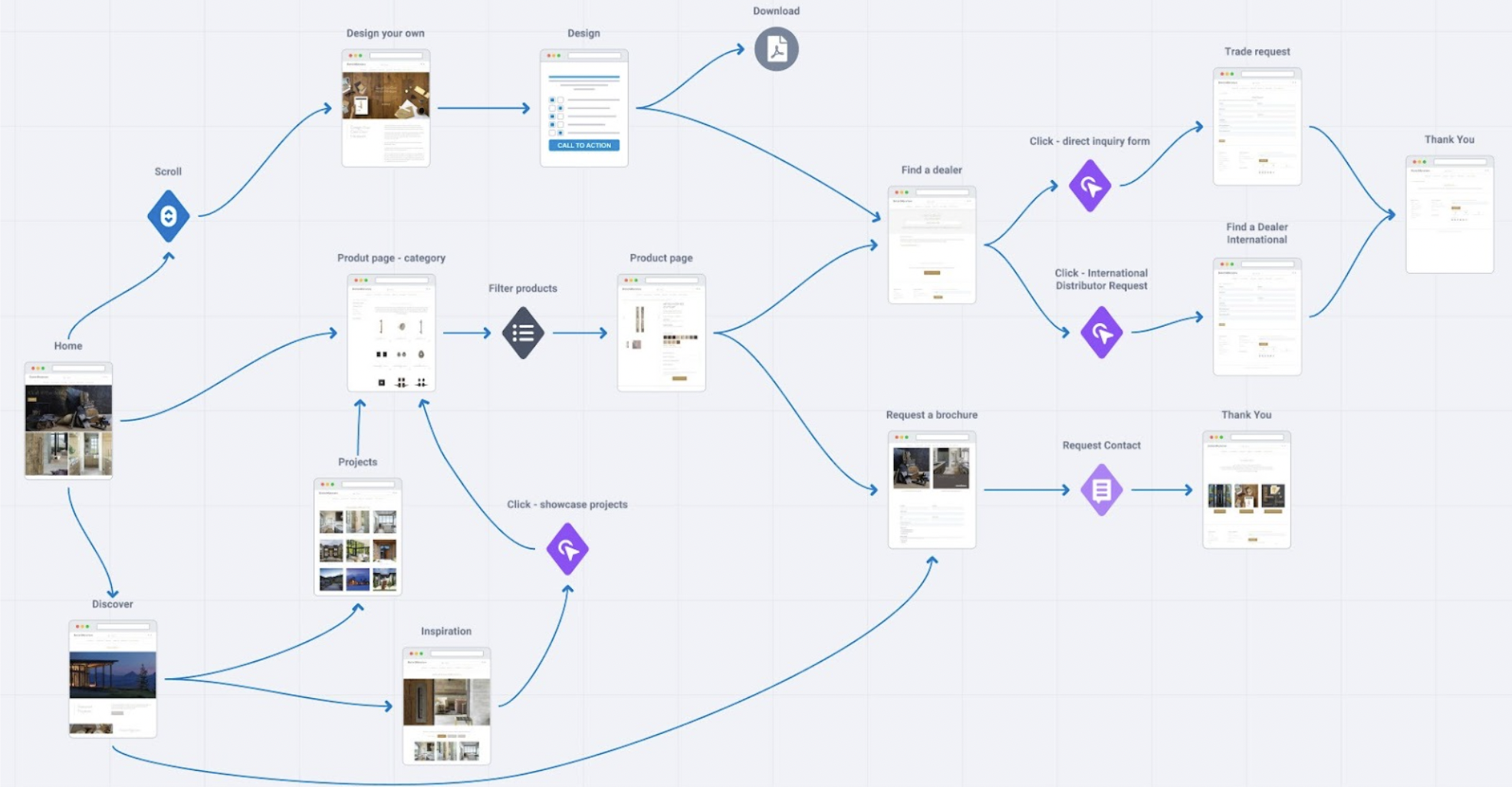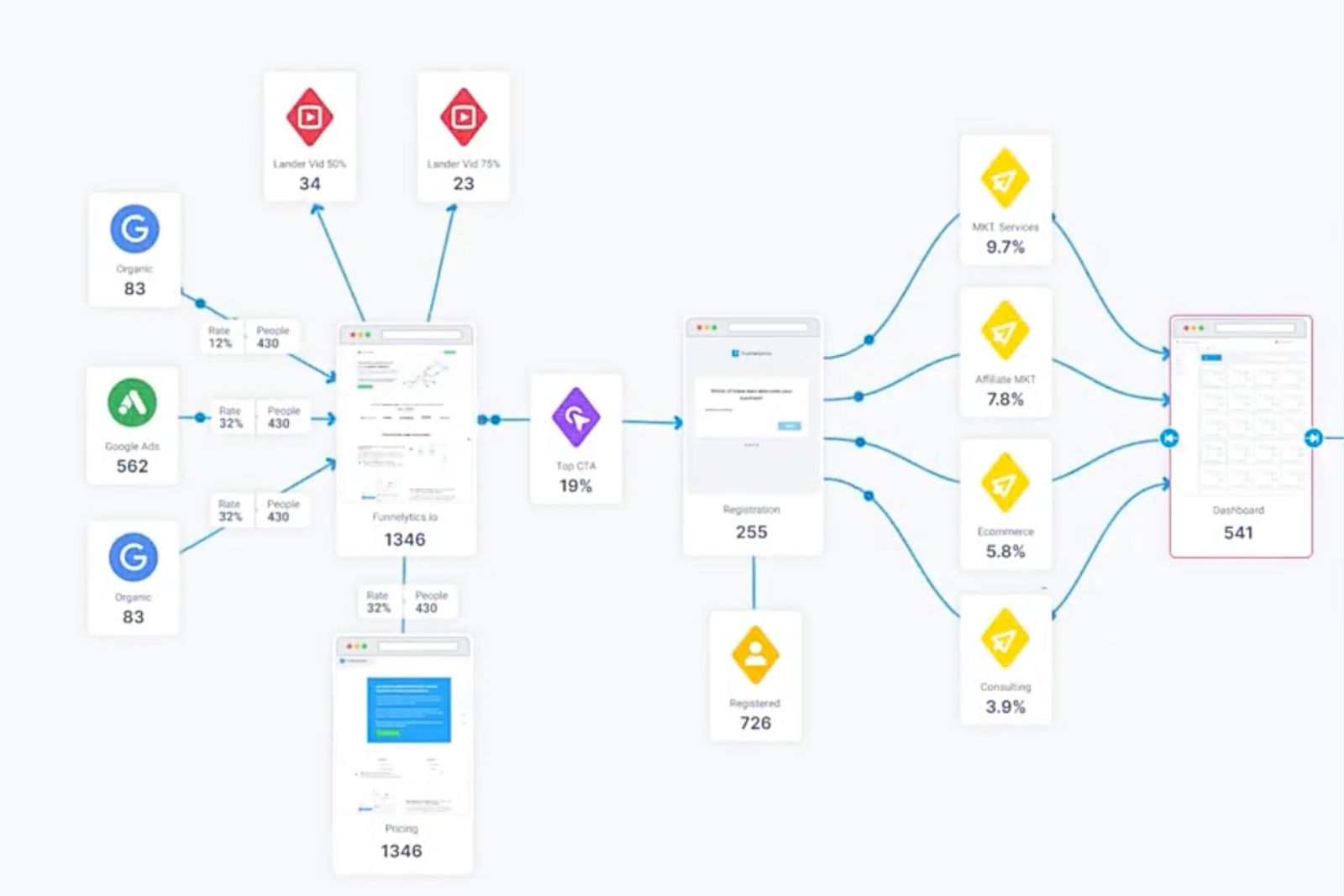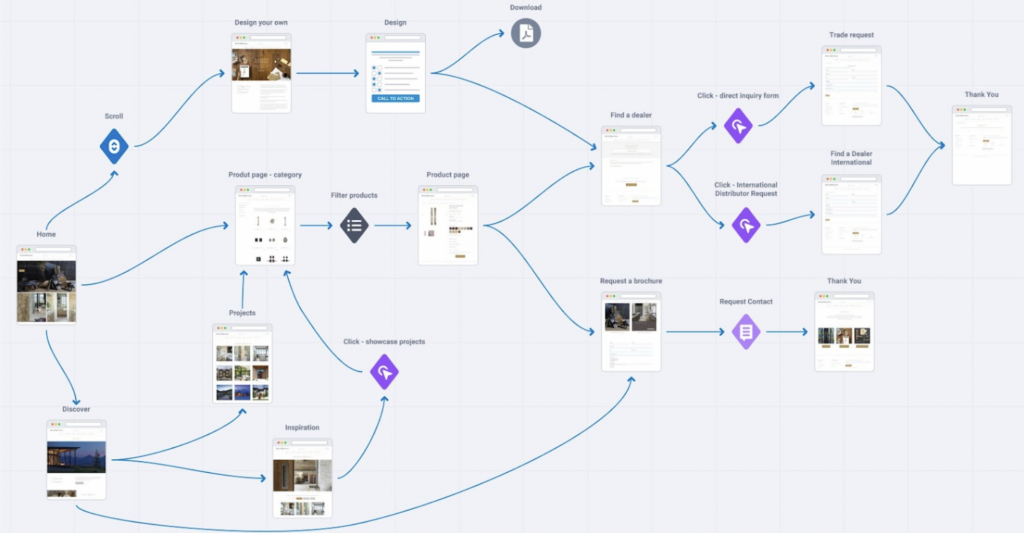In today’s competitive business landscape, understanding your customers is paramount to your success. To create exceptional experiences, marketers and industry leaders must dive deep into the customer journey, analyze customers’ interactions, identify pain points, and uncover their preferences throughout the entire conversion process. This is where customer journey mapping comes into play. Customer journey mapping is a powerful tool that allows you to visualize and comprehend the entire customer experience. In the following blog, we will explore the concept of customer journey mapping, its benefits, and how key takeaways can enhance your customer satisfaction and loyalty.
What is Customer Journey Mapping?

Customer journey mapping is the process of visualizing a customer’s interactions and experiences with a company, from their initial touchpoint to the final stage of their relationship. It involves understanding the customer’s emotions, motivations, and expectations at each step of their journey. By mapping out this journey, you can gain valuable insights into how customers engage with your brand, enabling you to identify gaps and improve the overall customer experience.
It’s important to note that customer journey mapping and conversion rate optimization (CRO) go hand-in-hand. CRO focuses on increasing the percentage of website visitors who take the desired action, such as making a purchase, filling out a form, or subscribing to a newsletter. To better analyze CRO, customer journey mapping allows us to analyze data and the comprehensive actions a user takes to reach a conversion point. By identifying and addressing barriers that prevent users from converting, we can improve user experience and ultimately drive higher conversion rates.
The Importance of Customer Journey Mapping

Enhancing Customer Understanding: Mapping the customer journey allows businesses to gain a holistic view of the customer’s experience, enabling them to understand pain points, needs, and desires.
Identifying Opportunities: By visualizing the journey, businesses can identify opportunities to engage customers at various touchpoints, enhancing their experience and driving loyalty.
Aligning Internal Processes: Customer journey mapping promotes cross-departmental collaboration, aligning teams and processes to deliver a consistent and seamless experience.
Improving Customer Satisfaction: By identifying pain points and addressing them, businesses can improve customer satisfaction levels and drive positive word-of-mouth referrals
Creating an Effective Customer Journey Map

To create an effective customer journey map, consider the following steps:
1. Define Customer Personas: Identify your target customers and create detailed personas to understand their preferences, motivations, and pain points.
2. Identify Customer Touchpoints: Map out all the touchpoints customers encounter during their journey, including online and offline interactions.
3. Capture Customer Emotions: Understand the emotional state of customers at each touchpoint to gauge their satisfaction levels and identify areas for improvement.
4. Highlight Pain Points and Opportunities: Identify the moments that cause frustration or delight for customers, highlighting pain points that need to be addressed and opportunities for enhancing the experience.
5. Plot the Customer Journey: Visualize the customer journey on a timeline, incorporating all the touchpoints, emotions, and pain points identified.
6. Analyze and Iterate: Continuously analyze the customer journey map, gather feedback from customers, and iterate based on new insights and changing customer behaviors.
Utilizing Customer Journey Maps

While there are several tools out there, we utilize Funnelytics to construct our comprehensive customer journey maps. Once the visual customer journey maps are created, we can leverage insights gained from the journey maps to improve interactions and tailor experiences to meet your customer’s expectations. Additionally, these insights are imperative to designing targeted marketing campaigns. With a customer journey map, you can begin developing targeting tactics that align with different stages of the customer journey, ensuring personalized and relevant messaging.
When it comes to the user experience of your website, utilizing customer journey maps can also be useful in identifying technological solutions for conversion paths to help identify technology gaps or opportunities that can streamline the customer experience.
Above all, when it comes to measuring your success, establishing key performance indicators (KPIs) to measure the impact of customer journey improvements, such as ROI, retention rates, and customer lifetime value, is key.
Final Thoughts
Customer journey mapping is an invaluable tool for businesses seeking to understand their customers and deliver exceptional experiences. By visualizing the customer’s path, identifying pain points, and proactively addressing them, you can gain a competitive edge when it comes to your audience. Remember, customer journey maps are not static documents, they are living tools that require regular updates and iterations to remain effective in an ever-evolving market. So, embark on the journey of understanding your customers and crafting delightful experiences that will set your business apart from the rest. Contact Unframed Digital to get started today, and begin leveraging your customer journey.










